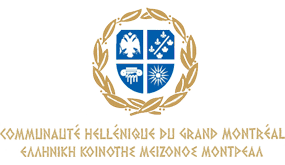A voyage to motherland
 25 students of the HCGM School Socrates-Démosthène traveled to Greece and had the opportunity to live a unique experience in their ancestors’ land. The group began its venture from the town of Molaoi, close to Sparta. The Center for Environmental Education of Molaoi was their first stop, where they learned about the natural environment of the area. On the third day, our students accompanied by their two teachers, Christo Philandriano and Lison Thibault, traveled to Olympia, where, for a couple of days, they visited the archeological site and the local museum.
25 students of the HCGM School Socrates-Démosthène traveled to Greece and had the opportunity to live a unique experience in their ancestors’ land. The group began its venture from the town of Molaoi, close to Sparta. The Center for Environmental Education of Molaoi was their first stop, where they learned about the natural environment of the area. On the third day, our students accompanied by their two teachers, Christo Philandriano and Lison Thibault, traveled to Olympia, where, for a couple of days, they visited the archeological site and the local museum.
Olympia, a sanctuary of ancient Greece on the Peloponnese peninsula, is known for having been the site of the Olympic Games in classical times. The Olympic Games were held every four years throughout Classical Antiquity, from the 8th century BC to the 4th century AD. The first Olympic Games were in honor of Zeus.
Next stop was the ancient city of Mycenae at its archeological site. In the second millennium BC, Mycenae was one of the major centres of Greek civilization, a military stronghold which dominated much of southern Greece. The period of Greek history from about 1600 BC to about 1100 BC is called Mycenaean in reference to Mycenae. At its peak in 1350 BC, the citadel and lower town had a population of 30,000 occupying an area of 32 hectares.
On the road to their next night stop in the town of Loutraki, they had the opportunity visit the well known ancient site of Epidaurus and its famous theatre. The theatre is admired for its exceptional acoustics, which permit almost perfect audibility of unamplified spoken words from the proscenium or “the stage” to all 14,000 spectators, regardless of their seating.
Using Loutraki as their home base for their last three days, the group went on several excursions to Athens. The Parthenon, former temple on the Athenian Acropolis, was their final destination. The temple dedicated to the goddess Athena, whom the people of Athens considered their patron-saint, began construction in 447 BC, when the Athenian Empire was at the peak of its power, and was completed in 438 BC. On the same day our students visited the Acropolis Museum, which is focused on the findings of the archaeological site of the Acropolis with nearly 4,000 objects exhibited.
The excursion to Pláka, the old historical neighbourhood of Athens, clustered around the northern and eastern slopes of the Acropolis, incorporating labyrinthine streets and neoclassical architecture, was a blast. They enjoyed Greek food at the traditional restaurants and bought gifts and souvenirs from the local shops. Plaka is also known as the “Neighbourhood of the Gods” due to its proximity to the Acropolis and its many archaeological sites.
Based on our children`s testimonials, this trip was a wandering between the ancient and modern Greece and offered memories and experiences which will accompany them for the rest of their lives.













